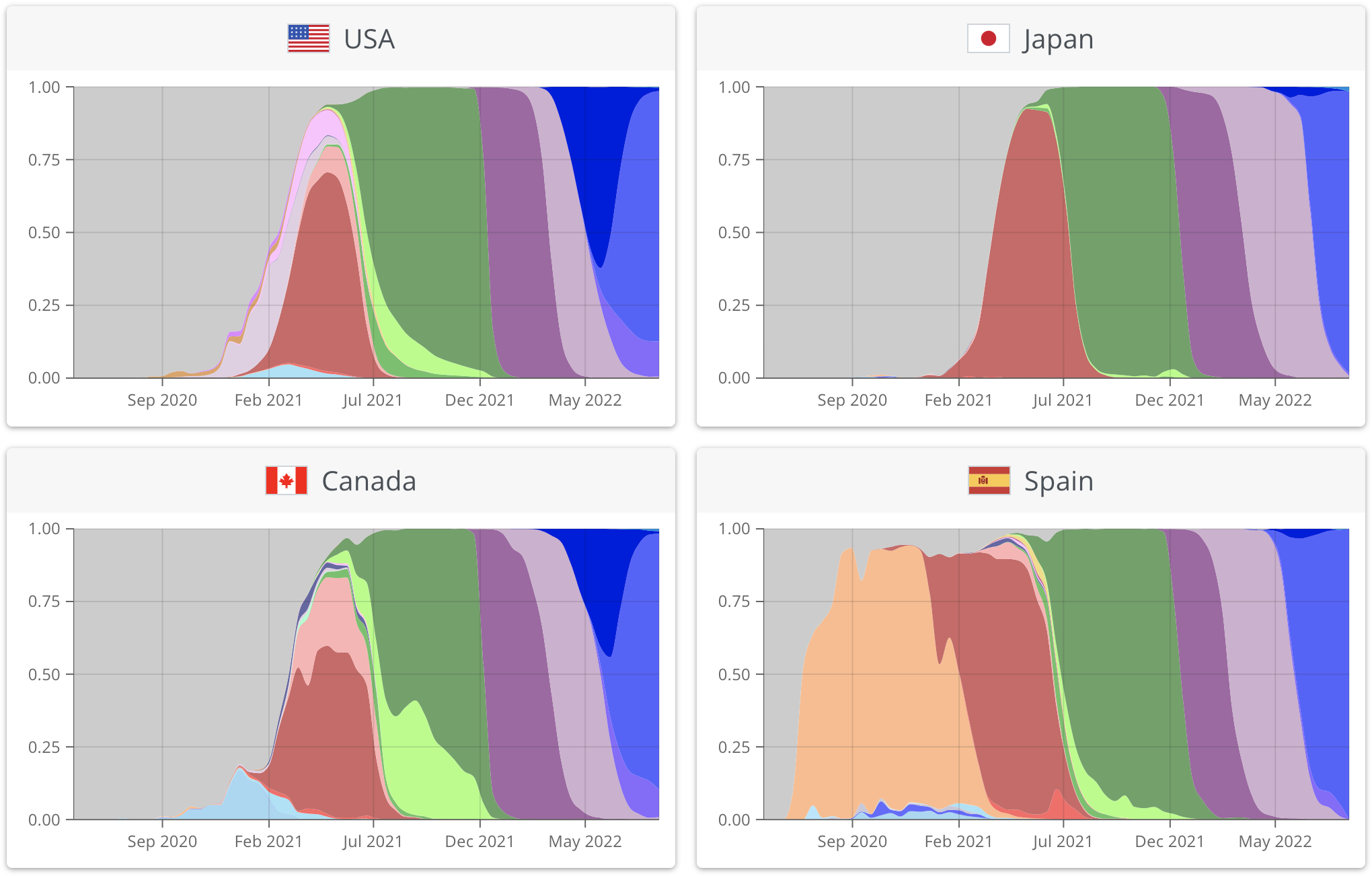Data Visualization
Math & Stats, Dalhousie University
2024-01-09
SARS-CoV-2 variants

Each color is a variant. Data from covariants.org
What stories were told in those images?
Stories
- CO2 in the atmosphere varies through the year, has increased 100 ppm over 60 years and is higher than it has been for 800,000 years
- Arctic sea ice volume has shrunk by more than 50% and the fall will be ice-free soon
- Fertility decreases as income increases, regardless of the country
- Is it going to rain? Turn cooler?
Stories
- Annual cycle of temperature is about 24°C. Daily range is about 8°C. Daily variation over years is 7-14°C.
- Napoleon’s army shrunk by 99% in their Russian campaign
- Military deaths in the Crimean war were largely from preventable causes
- Deaths from cholera were centred on one location in Broad St.
- There have been at least 7 major covid variants, persisting for 4-6 months each
What is data visualization?
What is data visualization?
Turn data into images
Iterative process to explore data
Filter, summarize, and present data
What is the purpose of data visualization?
Summarize data compactly
Leverage vision machinery in brain
Helps you tell a story with data
A familiar visualization tells a story “by itself”
What makes a good visualization?
Effective communication aid
Memorable & understandable
Aesthetically pleasing - nothing confusing, jarring, or out of place
Suggested reading
Course notes: Welcome
Course notes: Invitation to Data Visualization
Wilke: Chapter 29: Telling a story and making a point
Video: Hans Rosling’s TED talk (linked in “Invitation”)
Video: Excerpt from Claus Wilke’s talk for the Santa Fe Institute (linked in “Invitation”)
Task
Prepare a short report on two visualizations you like or could improve on.
Details in Course notes (Detailed outline, Evaluation)